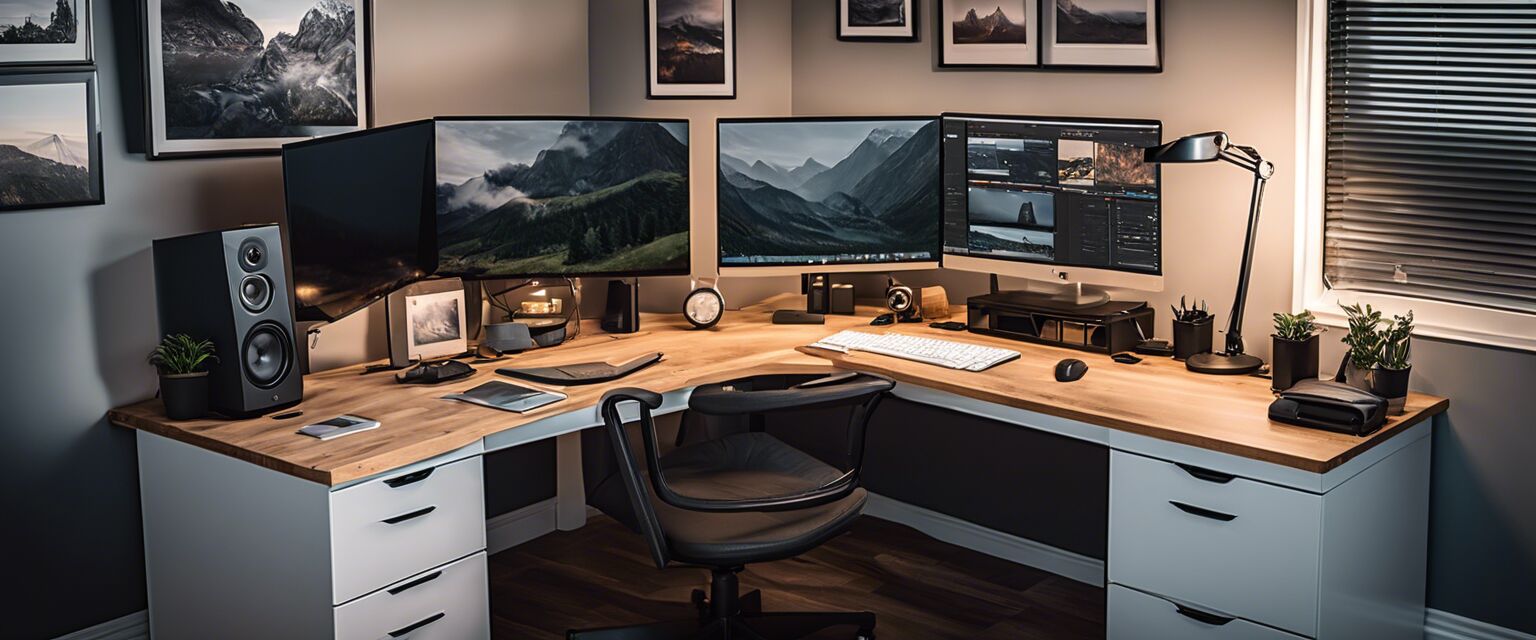
Home Office Lighting
Creating an efficient and comfortable workspace is essential for productivity. One of the most overlooked yet critical elements in an office setup is proper lighting. This article explores the importance of home office lighting and offers best practices for choosing the right lighting solutions to enhance your work environment.
Key Takeaways
- Proper lighting reduces eye strain and increases productivity.
- Combining ambient, task, and accent lighting creates a balanced atmosphere.
- Utilize natural light as much as possible to improve mood and energy levels.
- Invest in adjustable lighting solutions to cater for different tasks.
- The placement of light fixtures can greatly impact the overall feel of your workspace.
The importance of proper lighting
Good lighting is crucial in a home office for several reasons:
- Reduces Eye Strain: Inadequate lighting can cause eye strain, leading to fatigue and decreased productivity.
- Improves Focus: Proper lighting enhances your ability to concentrate for extended periods.
- Boosts Mood: A well-lit environment can positively affect your mood and enhance creativity.
- Increases Productivity: The right lighting is a key factor in maintaining high levels of productivity.
Types of lighting solutions
In a home office, you want to consider different types of lighting to create a conducive work environment. The three main types of lighting are:
| Type of Lighting | Description | Best Use |
|---|---|---|
| Ambient Lighting | General illumination that fills the room with light | Overall room lighting |
| Task Lighting | Focused light for specific tasks | Reading, writing, or working on the computer |
| Accent Lighting | Lighting that emphasizes certain elements in the room | Highlighting decor or artwork |
Best practices for home office lighting
To optimize your home office lighting, consider the following best practices:
- Use a mix of ambient, task, and accent lighting to create a balanced environment.
- Position your desk near windows to maximize natural light during the day.
- Invest in adjustable desk lamps for better control over task lighting.
- Choose LED bulbs for energy efficiency and longevity.
- Incorporate dimmers to adjust the intensity of your lighting as needed.
Natural lighting: The golden choice
Utilizing natural light is one of the best ways to enhance your workspace. Here are some tips:
Tips for maximizing natural light
- Position your desk facing the window wisely to avoid glare.
- Use sheer curtains to diffuse harsh sunlight while allowing light in.
- Keep windows clean to maximize light penetration.
- Consider light-colored walls and furnishings to reflect natural light.
Impact of lighting color temperature
The color temperature of your lighting can influence your comfort and performance:
| Color Temperature (Kelvin) | Effect | Recommended Use |
|---|---|---|
| 2700K - 3000K | Warm white light | Cozy settings, relaxation |
| 3000K - 3500K | Soft white light | Comfortable work settings |
| 4000K - 5000K | Neutral white light | Skilled tasks, detail-oriented work |
| 5000K - 6500K | Cool white to daylight | Enhances focus, productivity |
Enhancing your setup with smart lighting
Smart lighting solutions can contribute significantly to your home office experience. Hereâs how:
- Control your lighting through apps or voice assistants for convenience.
- Schedule lighting to mimic daylight patterns for better energy management.
- Adjust color temperatures remotely to suit your mood or task requirements.
Conclusion
Lighting is a key element in creating an efficient home office. By understanding the importance of different lighting types and implementing best practices, you can greatly enhance your productivity and comfort. Consider investing in smart lighting solutions and leveraging natural light to create a workspace that is both functional and inviting.
Pros
- Improves focus and productivity.
- Reduces eye strain and discomfort.
- Enhances the overall ambiance of the workspace.
- Allows for flexibility with adjustable lighting options.
Cons
- Cost associated with high-quality lighting solutions.
- Installation or modification of lighting can be complex.
- Poor lighting design may affect productivity negatively.








